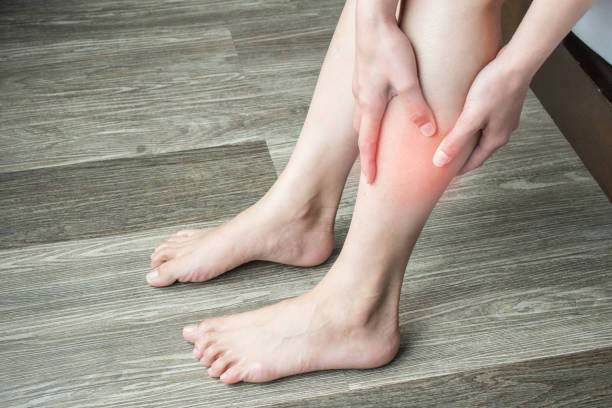Not many people realise that sitting for too long can also cause blood clots in the legs, especially in the thighs or calves. Blood clots are normal, but they can be secretly deadly if they get worse and are not treated properly.
Learn more about some of the symptoms and causes of blood clots in the legs, as well as how to avoid them, according to Webmd.
Why does prolonged sitting cause blood clots in the legs?
Blood clots that occur in one of the large veins in the body are referred to as deep vein thrombosis (DVT).
When there are foreign substances or particles that prevent blood from flowing normally or clotting properly, this can lead to blood clots in the legs.
Chemical imbalances in the blood clotting process can also cause blood to clot. In addition, problems with the venous valves also make it difficult for the blood to return to the heart.
Deep vein thrombosis (DVT) sometimes occurs for no apparent reason. However, the risk of blood clots in the legs may increase in certain situations, such as when you sit for too long.
Sitting for long hours restricts blood flow in the lower part of the body. This causes blood to pool around the ankles, leading to swelling and varicose veins.
This condition then leads to blood clots.
The pooled blood is usually nothing to worry too much about because when you start moving, the blood flow will start moving by itself evenly throughout the body.
However, if you are unable to move for a long period of time, such as experiencing paralysis, after surgery, or during a long journey, blood flow may slow down.
Slow blood flow can increase the risk of frozen blood forming in the legs.
READ MORE: I MAKE 150K A DAY WASHING CARS A HARDWORKING LADY REVEALS (VIDEO)
Who is at risk of developing blood clots in the legs?
Just like with DVT in general, your risk of developing blood clots in the legs is also increased if you or your immediate family have previously experienced DVT, and/or have any of the following conditions.
Being overweight or obese.
Smoking habit.
Dehydration.
Pregnancy.
Injury to the blood vessels.
Being over 60 years old, especially if you have a condition that restricts movement.
Swelling, redness, pain resembling severe muscle cramps, warm sensations, and tenderised areas are signs of blood clots in the legs, especially when these symptoms occur in only one leg.
You are more likely to have a clot in just one leg than in both. However, blood clots in the legs can also occur without any symptoms.
As reported by Dr Andrei Kindzelski from the National Institute of Health, about 30-40% of DVT cases in the legs go unnoticed by sufferers because they do not cause symptoms.
In some people, this condition is only recognised after experiencing more serious complications.








